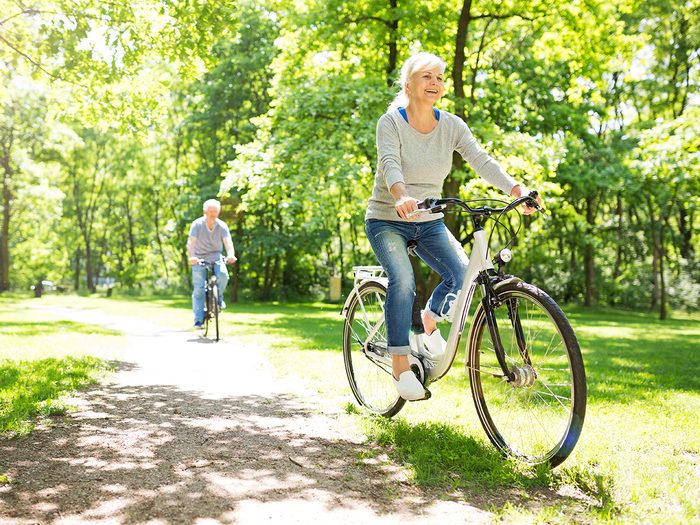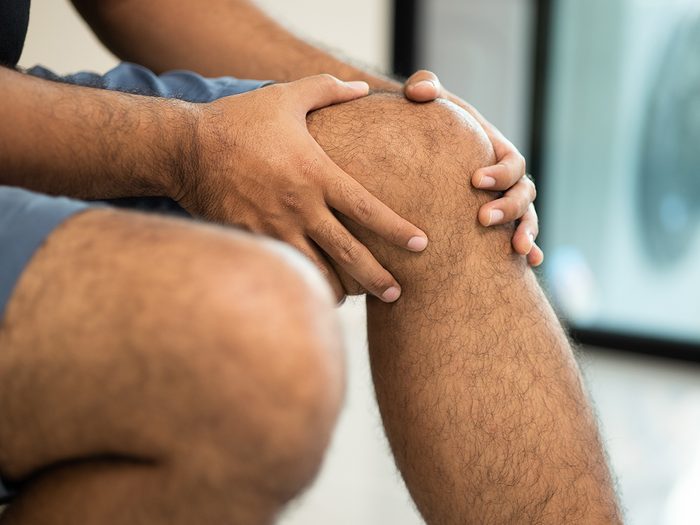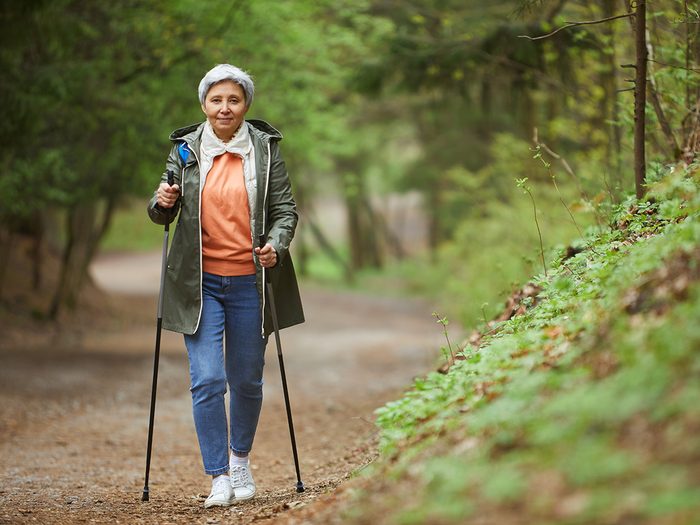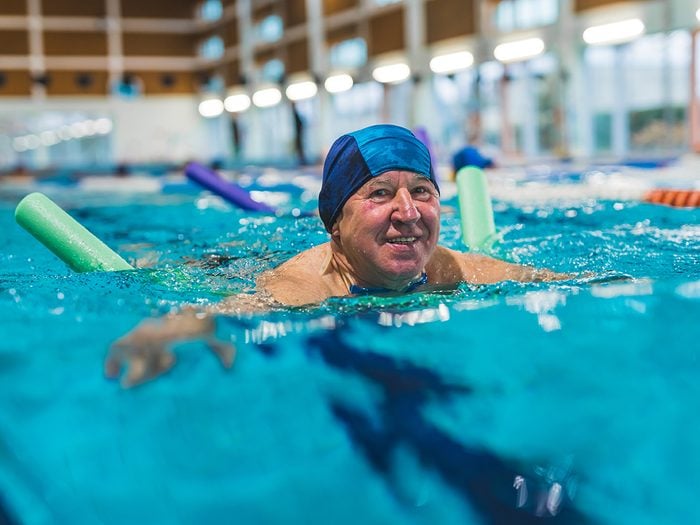
Arthritis Myths, Busted
Myth #1: If you have arthritis, you can’t exercise
If you have arthritis, not only should you not be avoiding exercise, but the right fitness program could help you get relief from your arthritis symptoms by contributing to improved strength, balance, flexibility and range of motion. “Now that you have arthritis, it’s even more important to stay as active as you can,” says Karen Gordon, an Ottawa-based physiotherapist and clinical practice leader with The Arthritis Society’s Arthritis Rehabilitation and Education Program (AREP).
Tip: Experts recommend at least 30 minutes of moderate-intensity exercise five days a week. Dust off your bike, buy a new bathing suit, start lifting weights—get moving in the ways that bring you the most happiness.

Myth #2: Exercise produces joint pain
The more sedentary you are, the more things are going to hurt. Exercise helps make it better by building strength and flexibility and controlling weight, says Gordon. One less pound on the scale, in fact, equals four pounds less pressure on your knees. To keep your body happy, especially when you’re starting out, alternate easy days with more challenging days. “Gentle days are for when joints are more sore,” says Gordon, who suggests heading for the pool or using a stationary bike in lieu of a brisk walk when pain is more bothersome.
Tip: To help with painful, swollen knees, try wearing a brace. Stiffness, on the other hand, could be a sign you need to get moving and lubricating those stubborn joints. Always consult with a healthcare professional prior to starting an exercise regimen.
Here are the silent signs you need to move more.

Myth #3: Pain is always a bad thing
It’s better to regard pain as a signal we should pay attention to. Over-the-counter pain relievers can help to relieve soreness following exercise; taking them beforehand is not the proper manner in which to use pain relievers and may mask the kind of instructive sensation you need to feel in order to judge when to stop and when to go.
Tip: Stop what you’re doing if joint pain increases after five or 10 minutes, suggests Gordon. Burning discomfort in the muscles, however, is a good thing. It means you’re working hard!
Find out if cherry juice really provides arthritis pain relief.

Myth #4: Exercise puts joints at risk
Exercise actually strengthens joint-supporting muscles. Movement lubricates squeaky joints, strengthens muscles and increases flexibility, all of which improve quality of life, says Gordon—for everyone, not just those with arthritis.
Tip: Studies show weight-bearing exercise—think walking, jogging or lifting weights—produces the healthiest knee cartilage. But if sore joints are impeding your workout, you can still head for the pool. You may not be able to walk on water but you can walk, jump, jog, squat and do lunges in water.
Find out what happens to your body when you start walking 10,000 steps a day.

Myth #5: Arthritis sufferers should follow a restrictive exercise regime
The truth of the matter is, arthritis sufferers can engage safely in a variety of physical activities. Low-impact activities such as swimming, aquatic exercise, cycling and walking are excellent options. But, so too is running—if it doesn’t cause you pain when you do it or leave you in pain for days afterward. Whatever you do, observe one rule, says Gordon. “You should be able to do the exercise without increasing joint pain.” She adds: “If you have osteoarthritis in the weight-bearing joints—in your knee, your hips, or your feet or spine—you want to keep to low-impact exercise.” Above all, “listen to your joints” and make appropriate modifications.
Tip: As a rule, walk, don’t run if you have osteoarthritis, and avoid higher-impact, twisting racquet sports.
Here’s the truth about shark cartilage supplements.

Myth #6: If you were sedentary before, now’s not the time to start exercise
It’s never too late to get more physical activity. If the longest walk you’ve taken lately was inside the grocery store, it doesn’t mean you shouldn’t do more—but it’s a good idea to consult a medical professional first. Start slowly, suggests Gordon, who advises asking yourself how you feel after you’ve gone for a long walk or done a few laps in the pool. If you feel better after exercising, then keep going. If you feel worse, cut down on intensity or duration and see if it helps.
Tip: Always take 10 minutes both to warm up before exercising—try a hot shower to loosen stiffness followed by some gentle movement—and to cool down post-workout.